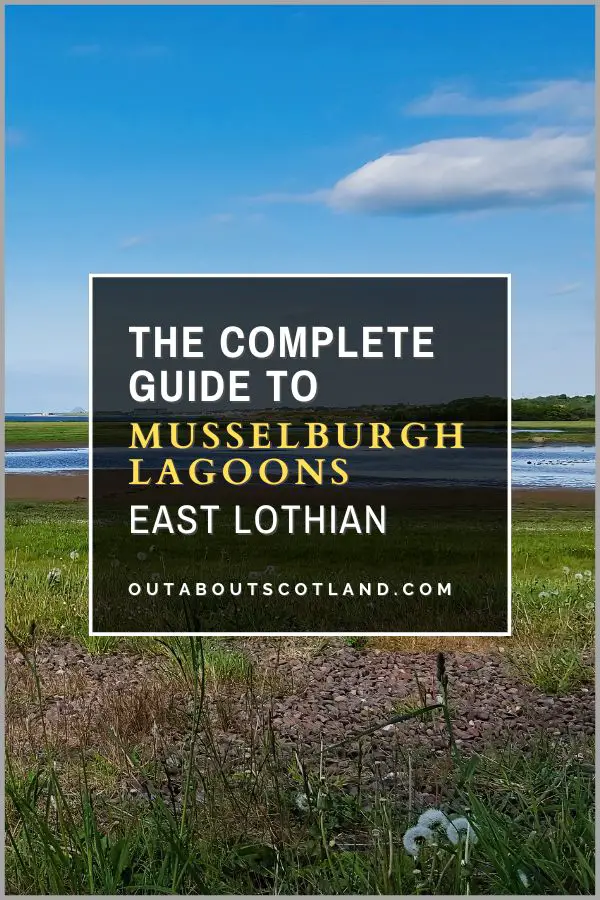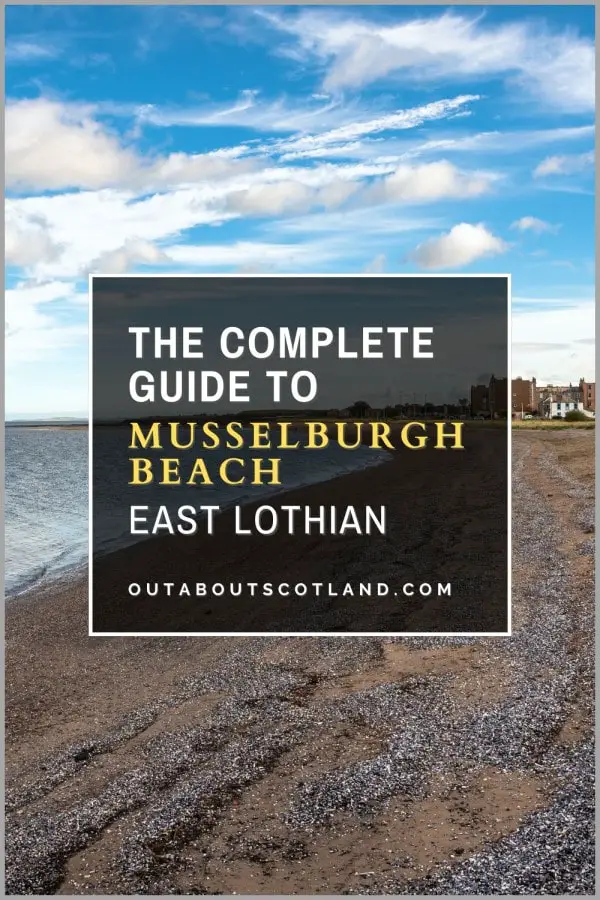Bass Rock is an island located in the outer part of the Firth of Forth in the east of Scotland. It’s approximately 1.2 miles offshore and 3.1 miles north-east of the East Lothian town of North Berwick. This sheer-sided volcanic rock is 107 meters at its highest point and is home to a large colony of Northern gannets.
The Scottish Seabird Centre operates boat trips to Bass Rock from North Berwick, allowing visitors to experience the island’s spectacular natural beauty and wildlife up close, making it a popular destination for birdwatchers and sightseers alike.
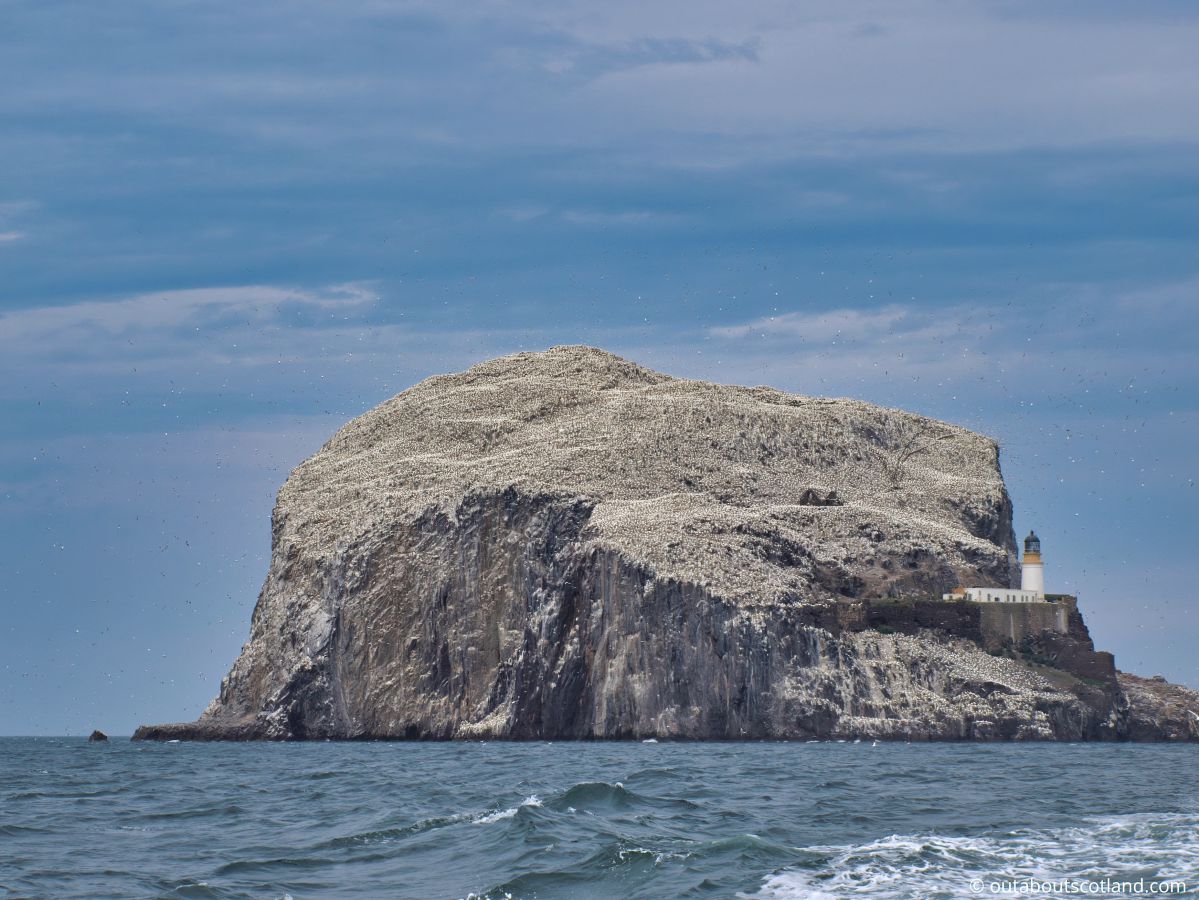
Overview

The Bass Rock, situated in the Firth of Forth in East Lothian, is an imposing volcanic plug renowned for its stark beauty. Home to the world’s largest Northern gannet colony, it’s a natural wonder for wildlife enthusiasts and sightseers. Its historic lighthouse adds charm to this truly unique island.
Just over a mile off the shore of North Berwick lies one of the most impressive islands in the Forth Estuary – the mighty Bass Rock. This rock outcrop is home to the largest northern gannet colony in the world and bird watchers from across the planet head there to take boat trips around the island to watch thousands of swarming birds make nests and hunt for food.
The Bass Rock is enormous and reaches 107 metres above sea level at its highest point, with most of the 320 million-year-old volcanic plug standing vertically above the pounding waves of the Firth of Forth. Swirling above it are countless birds engaged in an endless display of aerial acrobatics, while seals and dolphins are frequently seen below. Perhaps that’s why Sir David Attenborough described the Bass Rock as one of the twelve wildlife wonders of the world.
The gannets put on a fantastic show for visitors and it’s quite a spectacle to see them filling the sky overhead. With the Bass Rock as a background, it has to be one of the best photo opportunities in Scotland, but you can’t exactly put your shoes on and take a walk out there so you have two options to see the rock and its noisy residents up close.
First off, you can head to The Scottish Seabird Centre in North Berwick to view the wildlife through powerful telescopes and the remote-controlled cameras installed on the rock. The second (and my recommended option) is to book a trip on one of the tour boats that sail out from the Scottish Seabird Centre each day. It’s an exciting cruise and one that’ll keep both wildlife enthusiasts and keen photographers very happy during the sail.
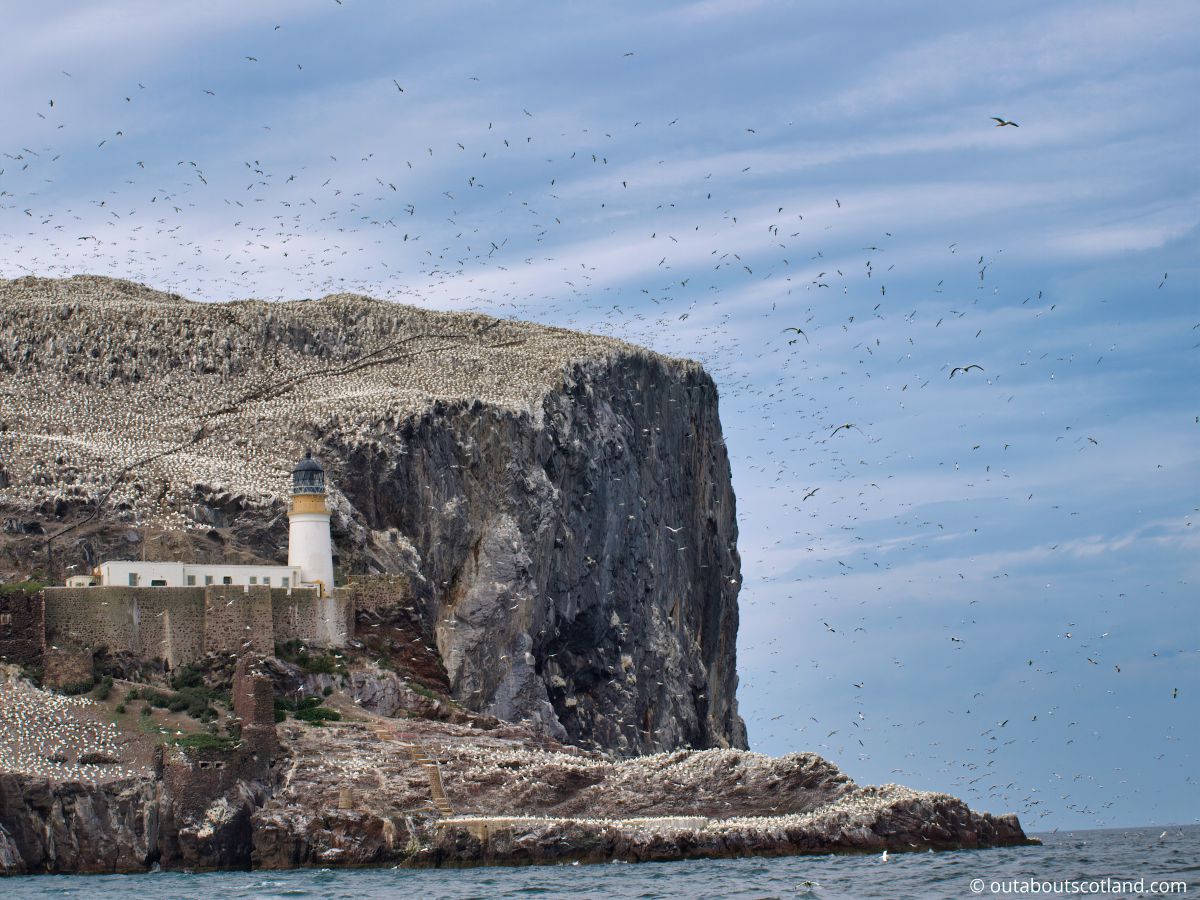
The Highlights
1: Bass Rock is renowned for its large and vibrant colony of gannets which is why it’s often referred to as one of the ‘Wildlife Wonders of the World’. It’s a great place for birdwatchers and a trip around it is guaranteed to be enjoyed by the whole family.
2: The catamaran boat trip from the Scottish Seabird Centre in North Berwick is good fun, but if you want a more adrenaline-fuelled trip, try the RIB (a type of fast open dinghy). I’d give it a miss if the Firth of Forth is a bit choppy, though – unless you want to get soaked.
3: With its spectacular wildlife and stunning views, Bass Rock is a fantastic spot for photography. Whether you’re an amateur or a professional, you’ll find plenty of great photo opportunities – especially if you join one of the tours that land on it.
Visiting Tips
1: Wear a waterproof jacket for the boat trip. The wind whips up the sea no matter the time of year and a decent jacket will stop you from getting cold and wet as you’ll mostly have to sit outside. If nothing else, consider sticking a disposable poncho (Amazon link) in your bag.
2: If you intend to go on this trip and photograph the birds I’m afraid a phone simply won’t cut it as they’ll be too far away to capture. This is one occasion where a proper camera with a zoom lens comes into its own. If you don’t have a zoom lens, the next best thing is a pair of binoculars (see my binocular reviews).
3: You can get a great land-based view of Bass Rock from Berwick Law, but if you want a close-up view, visit the Scottish Seabird Centre in North Berwick which has live-action camera feeds streamed directly from the rock.

Tourist Information
More than 150,000 gannets nest on the Bass Rock at the peak of the season but these numbers gradually reduce towards the end of October when they set off on their long journey south, with many travelling as far as the west coast of Africa.
When you first catch sight of the enormous monolith glinting polar-white in the middle of the Firth of Forth you could easily think it’s either covered in snow or the rock has been painted white, but in fact, what’s causing the colour are countless bird poops plastered across its surface! Nature lovers have plenty to look at without the gannet’s presence as the rock is also home to shags, guillemots, razorbills and puffins, and seals can usually be seen hauling themselves onto the rocks below.
Visitors who want to see the Bass Rock up close can book a tour on one of the boats operated by the Scottish Seabird Centre. These boats are either a 12-seat RIB or a 55-seat catamaran, with the catamaran taking you around three outcrops in this part of the Firth of Forth – the Lamb, Craigleith, and of course, the Bass Rock itself.
While looking through the binoculars in the seabird centre is interesting enough, taking a boat trip is the only way to fully appreciate the size of Bass Rock and the number of birds that live on it.
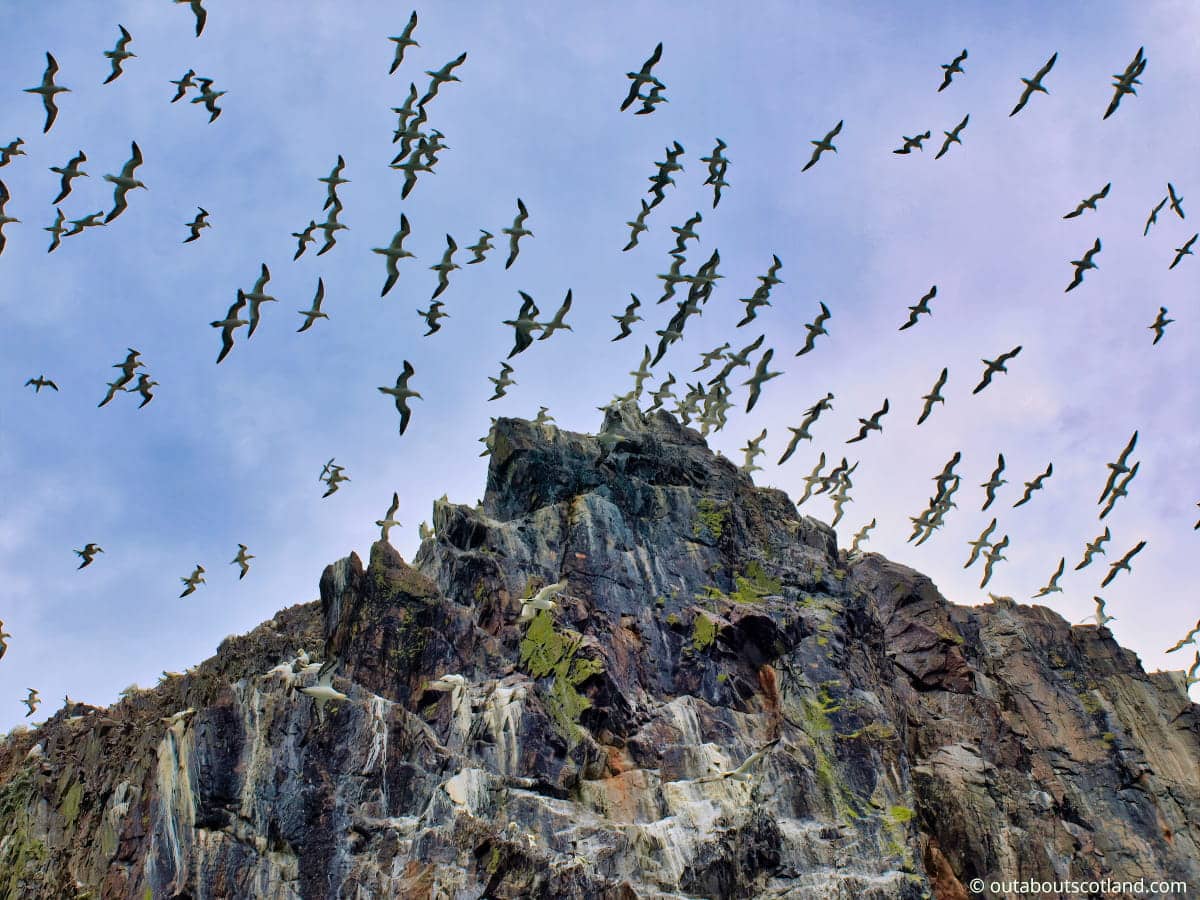
Departing from the Scottish Seabird Centre, the tour boat sails out into the Firth of Forth for a return trip that takes around two hours, which is fantastic fun when the sea is calm but not so much when the weather closes in and the waves get a bit choppy. The inflatable RIB is more exciting as it’s much faster but then it’s also less relaxing (and much wetter) and not so good for photographers.
The Seabird Centre also offers private boat tours and charters and I have it on good authority that taking the tour that lands on the rock is an incredible experience (they have exclusive landing rights), although it’s quite expensive.
History
The rock is uninhabited today but in the past, it was settled by Saint Baldred (an early Christian hermit) in 600AD and was also the site of a castle that was used as a prison in the 17th century. These days it’s left alone for nature to make use of thanks to its current owner Sir Hew Hamilton-Dalrymple whose family acquired it in 1706 from the Lauder family who had owned it for the previous six centuries.
Although Bass Rock is now free from humans there are a couple of man-made structures on it – namely the lighthouse that was built in 1902 and the remains of Saint Baldred’s chapel. There are also a few cameras that have been installed to keep watch on the birds, but other than that the rock has been given back to nature.
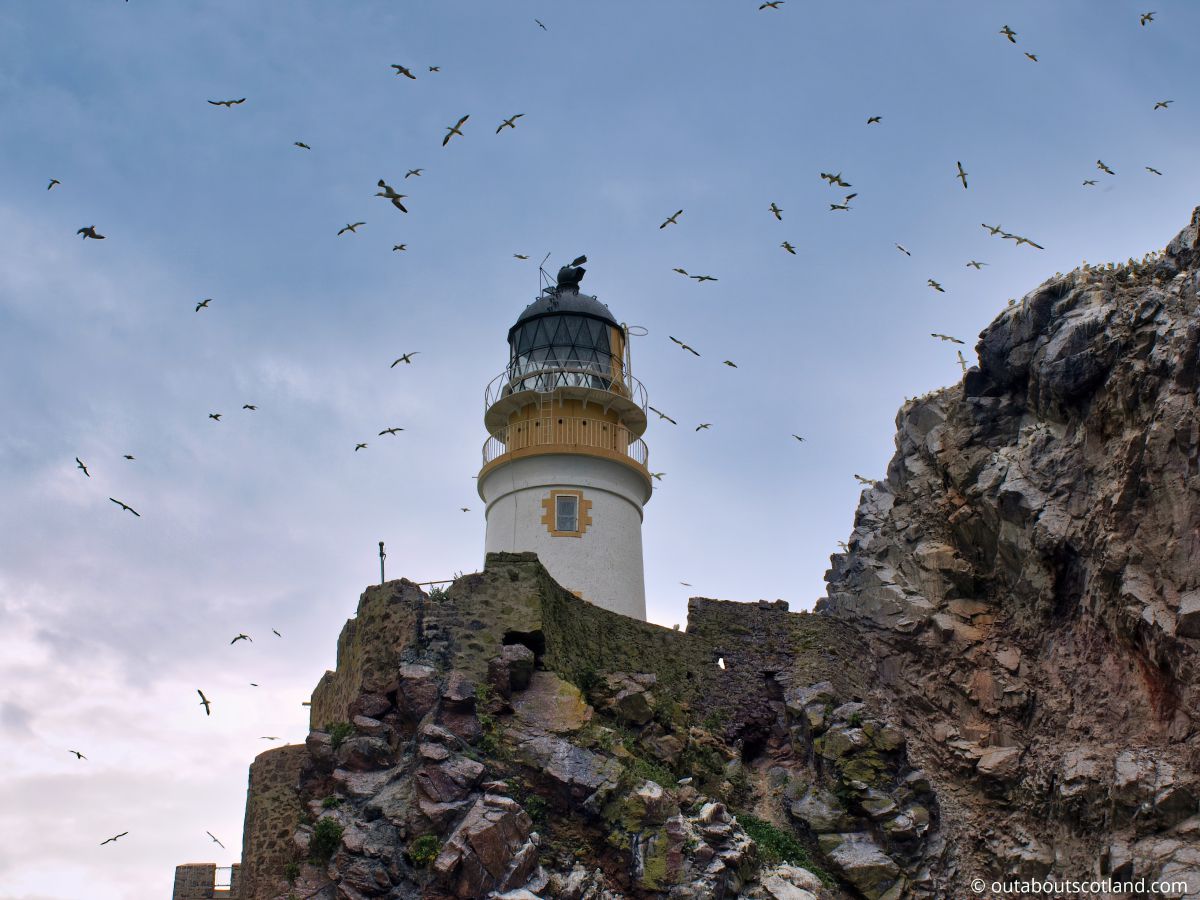
Things to Do
Boat Tours: Get close to the action by taking a boat tour around the rock. These tours give you an excellent opportunity to appreciate the sheer size of Bass Rock – and you might see seals, dolphins, and puffins on your journey.
Birdwatching: Bass Rock is internationally renowned as a wildlife reserve, hosting the world’s largest colony of Northern Gannets. With binoculars and a keen eye, you can watch these birds as they dive into the sea to fish, or see them nurturing their chicks during breeding season.
The Scottish Seabird Centre: Located in North Berwick, the Scottish Seabird Centre offers interactive live cameras that provide a bird’s eye view of Bass Rock. Learn more about the gannets and other seabirds and the conservation efforts in place to protect them.
Photography: Bass Rock’s dramatic landscapes and extraordinary wildlife make it a paradise for photographers. The white rock (due to the large number of gannets), the turquoise sea, and the dramatic lighthouse provide a unique backdrop for photos.
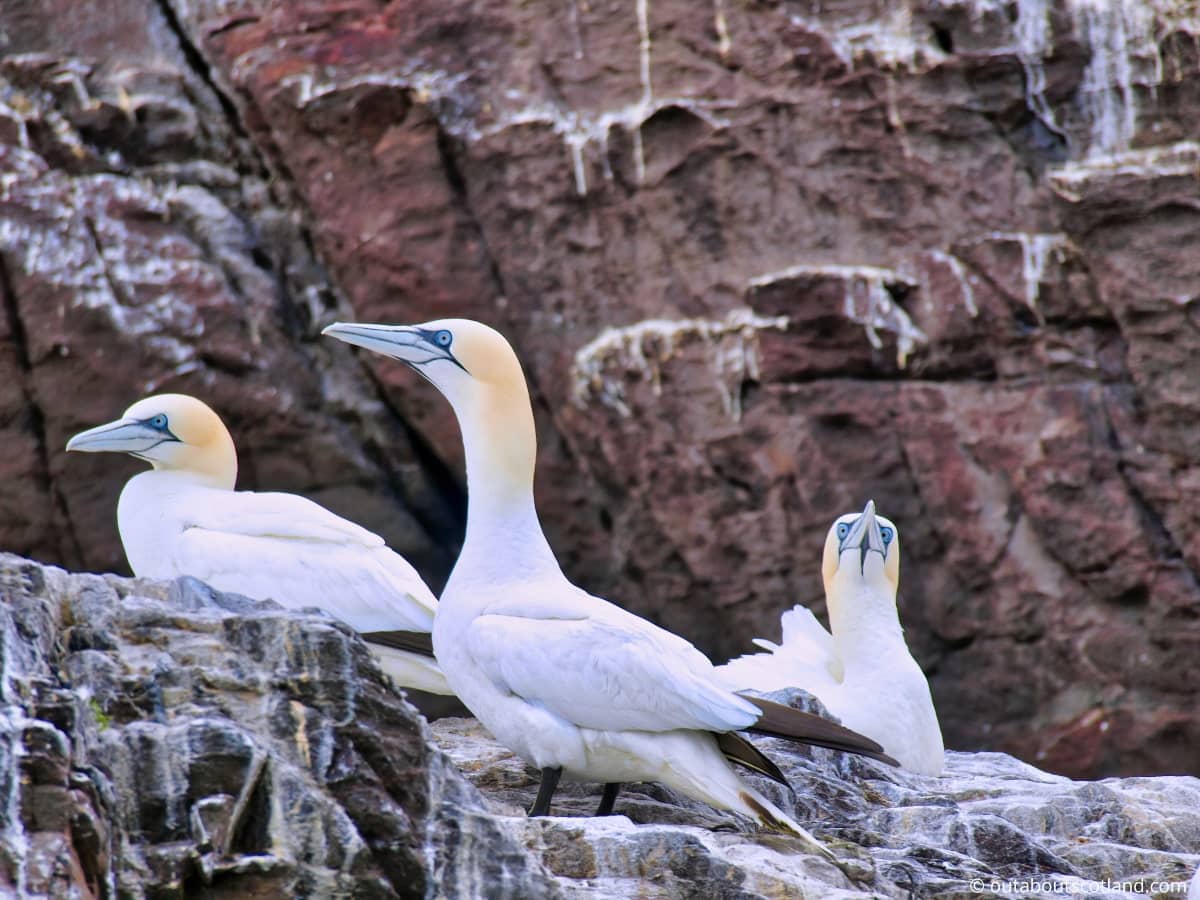
Frequently Asked Questions
How do I get to Bass Rock?
Bass Rock is a volcanic plug situated in the Firth of Forth, just offshore from North Berwick in East Lothian. Access to Bass Rock is organized by the Scottish Seabird Centre in North Berwick (Address: North Berwick, EH39 4SS).
Can you land on Bass Rock?
It’s not permitted to land on Bass Rock unless as part of an organized tour from the Scottish Seabird Centre. This is to limit disturbance to the bird colonies.
Does anyone live on Bass Rock?
The Bass Rock is uninhabited, but historically it was home to a prison, a castle, a chapel, and a small settlement.
What is Bass Rock made of?
Bass Rock is formed of phonolitic trachyte from the Dinantian age, which is the same rock that Berwick Law is made from. The rock covers 7 acres (3 hectares) and has an elevation of 351 feet (107 metres) at its highest point.




